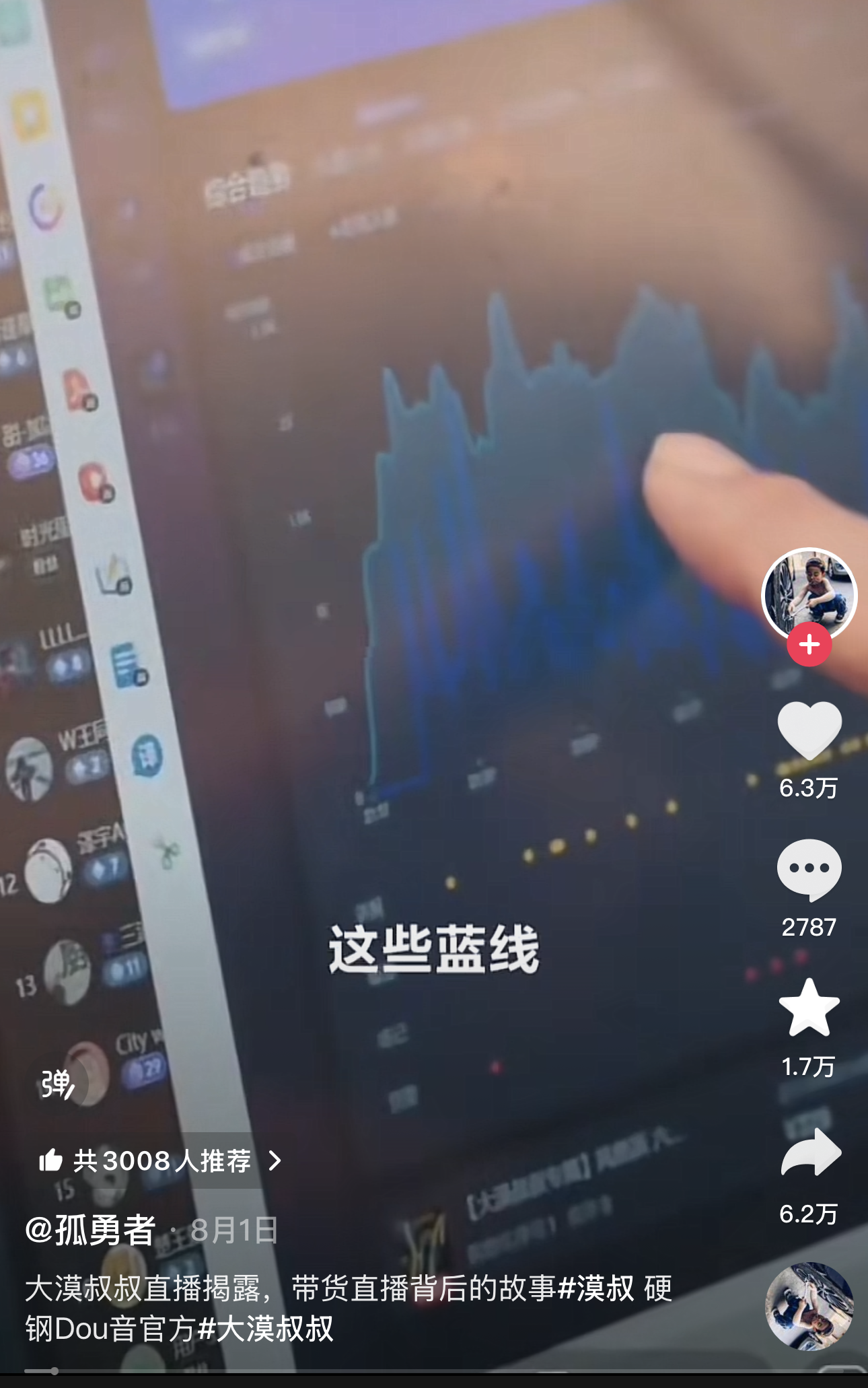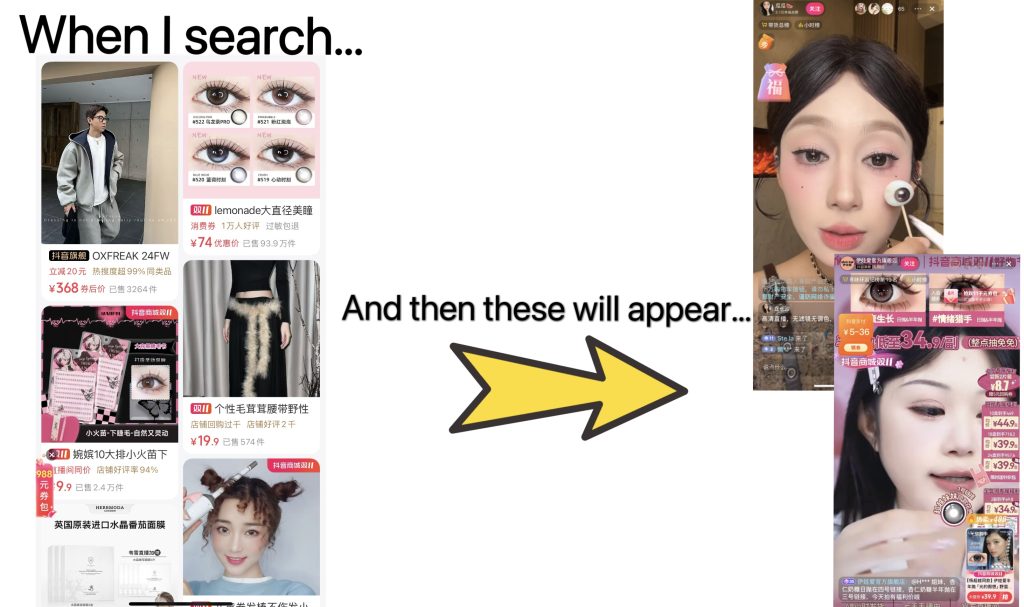Introduction
In this rapidly developing internet era, users receive content, products, services, and more that they are interested in through algorithm recommendations. However, due to the intervention of algorithm recommendations, social platforms have gradually become commercialized. Recently, a lot of online celebrities exposed the data analysis of the Tiktok live streaming background. For example, this user of Chinese TikTok, Gu Yongzhe, explained that all the people watching the live streaming shopping are monitored by the data of the TikTok background. For example, when the anchor is talking about a topic, someone places an order at this time, then this topic will be a topic that can let users place an order. The anchor will always repeat this topic indefinitely.

https://v.douyin.com/iSoVbYXq/ K@W.md 07/21 Gic:/
The background data algorithm of Tiktok live broadcast reflects several key characteristics of media theory
Firstly, Media is information. Marshall McLuhan believed that the form and characteristics of media have a significant impact on the way information is disseminated and received (McLuhan, 1964). As the lone brave said, the background data algorithm of Tiktok Live determines the recommendation and presentation of live content. Moreover, it can be observed that the algorithm selectively pushes content by analyzing users’ viewing behavior, interaction data, etc., thereby shaping users’ viewing experience and behavior. If I search for the product I want to buy on TikTok now, I will be pushed to the live broadcast room about this product soon.

Secondly, agenda setting for media. The media influences the public’s awareness and importance of certain issues by selecting and highlighting them. The algorithm determines which live content will be recommended to users by analyzing their interests and behaviors. So people who watch live broadcasts are influenced by algorithms that discover users’ interest in a certain type of content (such as beauty, games) and recommend related live broadcasts, thereby affecting users’ focus and agenda.
Thirdly, The theory of media assimilation. George Gerbner believed that long-term exposure to certain media content can subtly influence the audience’s worldview and values (Gerbner, 1973). The algorithm of Tiktok live broadcast may gradually shape users’ values and world outlook by continuously recommending live content that meets users’ interests. For example, if an algorithm continuously recommends a certain type of entertainment content, users may gradually accept and internalize the values conveyed by these contents. Fourthly, Filter bubbles through the medium. Proposed by Eli Pariser, personalized algorithms filter information based on user preferences, resulting in users only being exposed to content that aligns with their own views, forming an information cocoon (Pariser, 2011). The algorithm of Tiktok live broadcast recommends similar content by analyzing users’ viewing history, likes, comments and other behaviors, so that users can fall into the information cocoon room. This filtering bubble effect may result in a narrow field of view for users, making it difficult to access diverse live content.
Conclusion
In conclusion, the algorithm evaluation behind Tiktok live broadcast, although it provides users with personalized content recommendation, it also has many shortcomings and drawbacks. The existence of these issues not only affects user experience, but may also have profound impacts on social culture, values, and behavioral patterns. Therefore, further research and improvement of algorithms are needed to reduce their negative impact, enhance their fairness and transparency.
Reference:
McLuhan, M., 1964. Understanding media: The extensions of man. New York: McGraw-Hill.
Gerbner, G., 1973. Mainstreaming against the American grain. Journal of Communication, 23(1), pp. 133-148.
Pariser, E., 2011. The filter bubble: What the Internet is hiding from you. London: Penguin Books.
[1] Douyin Video. (2023). Video Title. [Online]. Available: https://v.douyin.com/iSoVbYXq/ [Accessed: 21 July 2023].


Your analysis of TikTokÔÇÖs live broadcast algorithm is insightful and sheds light on the ways media theory applies to algorithmic influence on users. I agree with your points on agenda-setting and media assimilation; the algorithmÔÇÖs selective promotion of content does seem to shape viewersÔÇÖ focus and potentially even their values over time.
One additional point that could enhance the discussion is the potential impact on identity construction. When users are repeatedly exposed to certain themes or values, they might unconsciously incorporate these into their self-perception, particularly in the context of a highly personalized platform like TikTok. This could be connected to the ÔÇťconstruction of identity in a digital world,ÔÇŁ as the algorithm not only filters content but may influence how users see themselves in relation to the world.
Could this algorithm-driven environment contribute to a homogenization of identity for frequent users? This raises questions about how digital platforms, through algorithms, might impact usersÔÇÖ individuality and diversity of thought.
Hi zhaoning, I think itÔÇÖs a great point to explain ÔÇťMedia is informationÔÇŁ by using TikTokÔÇÖs data algorithm as an example. By collecting different usersÔÇÖ preferences and the categories they frequently browse, it can largely reflect current trends and hot topics. The data behind the platform essentially represents information, and this valuable information might be exactly what businesses, as you mentioned, need. Additionally, a small suggestion is that maybe next time you could add a cover image in the top which would make it even more perfect.